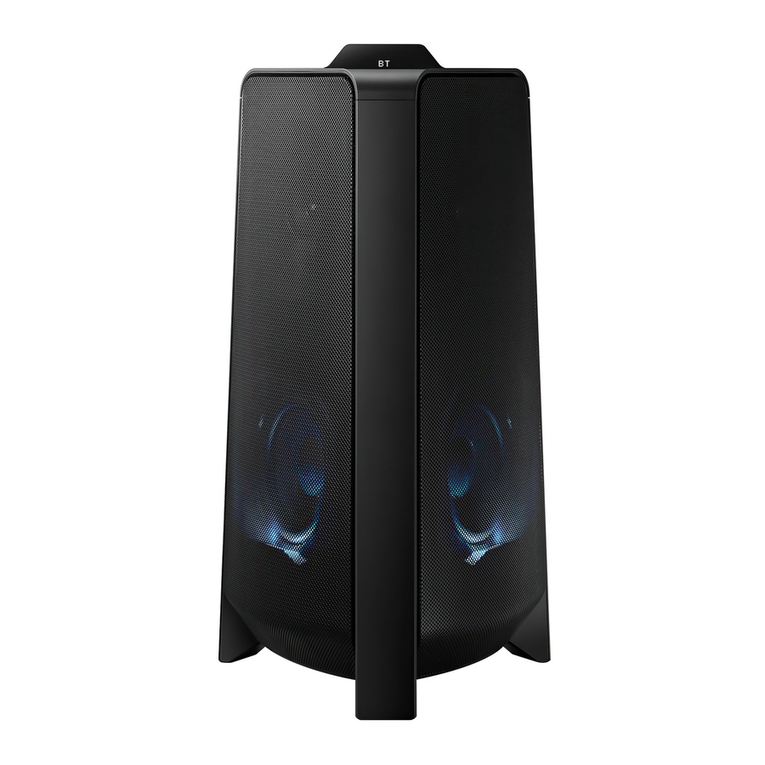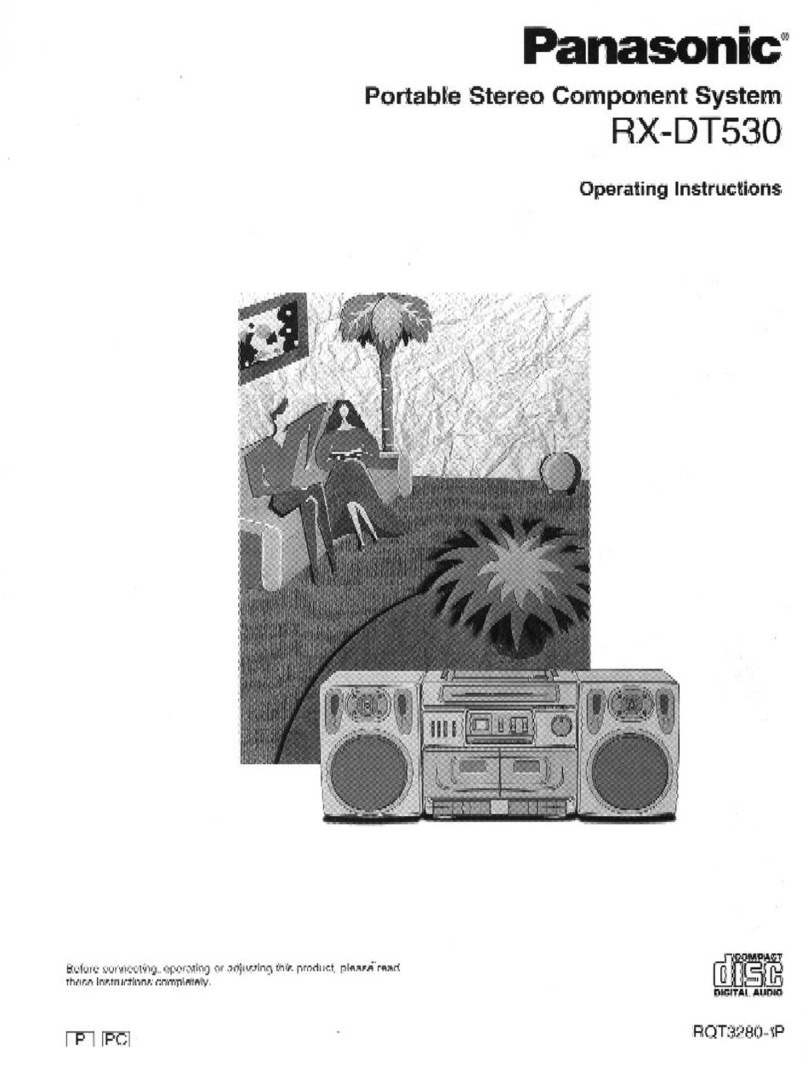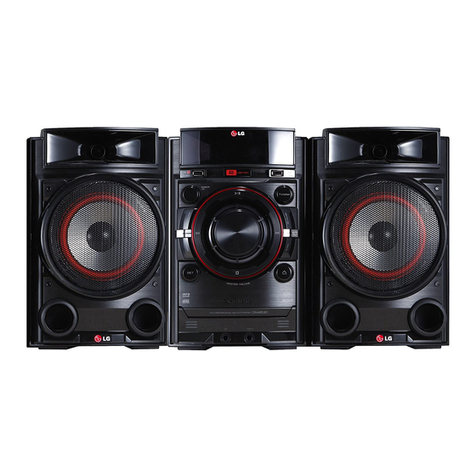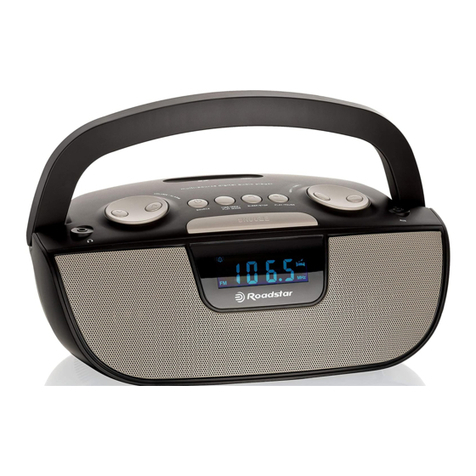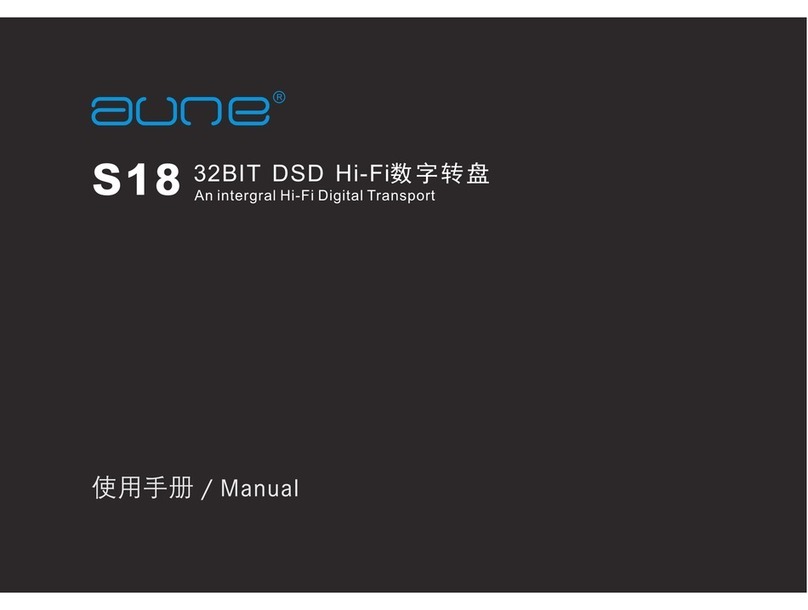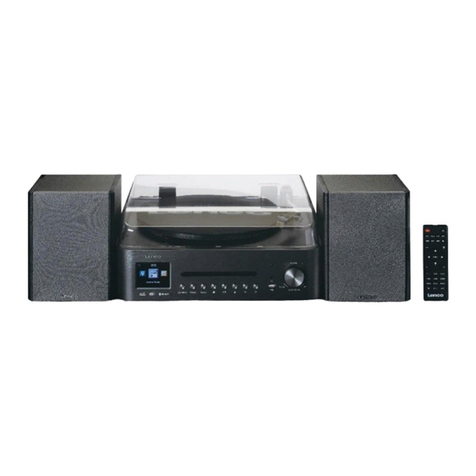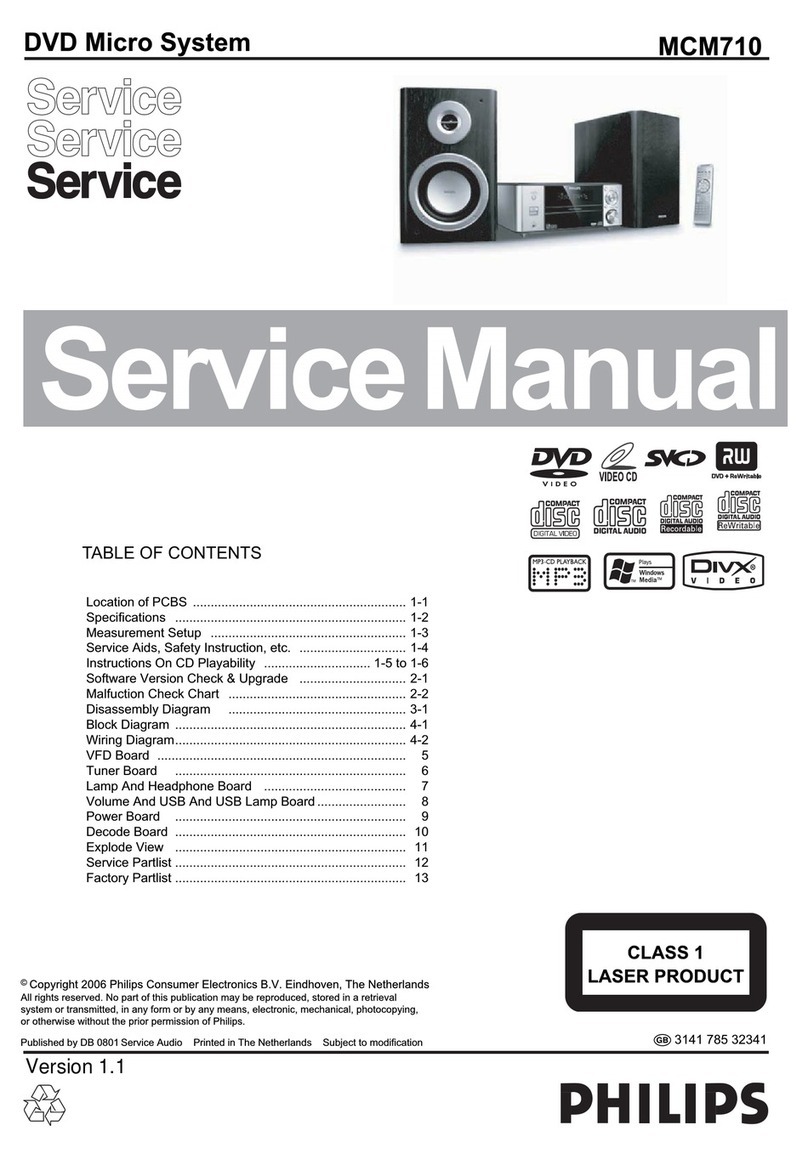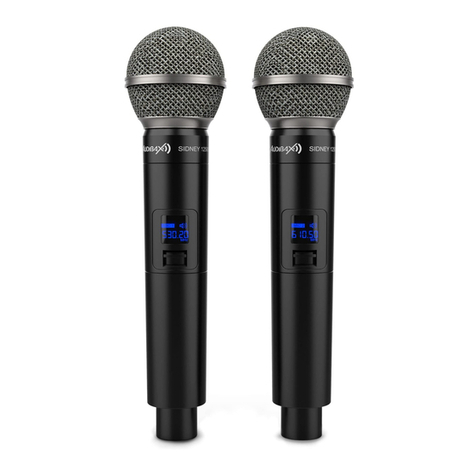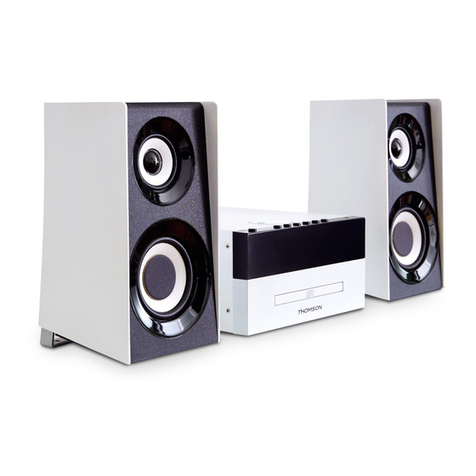DK-Audio PTO600C-5.1 User manual

MSD/PT0600/200 - Technical Reference Manual
Copyright©2002 DK-Audio A/S, Herlev, Denmark.
All rights reserved.
No part of this publication may be reproduced or distributed in any form, or by
any means, without prior written consent from DK-Audio A/S.
Trademarks
Analog Devices is a registered trademark of Analog Devices, Inc., USA
Crystal is a registered trademark of Cirrus Logic, Inc., USA
AKM is a registered trademark of Asahi Kasei Microsystems Co., Ltd., Japan
Tektronix is a registered trademark of Tektronix Inc., USA
DK-Scale is a registered trademark of DK-Audio, Denmark
JellyFish™ is a registered trademark of DK-Audio, Denmark

MSD/PT0600/200 - Technical Reference Manual
Contents
Section . . . . . . . . . . . . . . . . . . . . . . . . . . . . .Page
1. Introduction . . . . . . . . . . . . . . . . . . . . . . 1
1.1 This Manual . . . . . . . . . . . . . . . . . . . . . . 1
2. The Audio Matrix . . . . . . . . . . . . . . . . . 2
3. External Synchronisation and the
Sample Rate Converter . . . . . . . . . . . . 3
4. Hardware . . . . . . . . . . . . . . . . . . . . . . . 5
4.1 Analogue Audio Inputs . . . . . . . . . . . . . . 5
4.2 Digital Audio Inputs . . . . . . . . . . . . . . . . 5
4.3 Analogue Audio Output . . . . . . . . . . . . . 5
4.4 Digital Audio Output . . . . . . . . . . . . . . . 6
4.5 External Sync Source Input . . . . . . . . . . . 6
4.6 DSP Microcomputer . . . . . . . . . . . . . . . 6
4.7 Flash-PROM (Program Storage Media) . . 7
4.8 LCD Display . . . . . . . . . . . . . . . . . . . . . . 7
4.9 Hardware ID . . . . . . . . . . . . . . . . . . . . . . 7
4.10 Power Supply . . . . . . . . . . . . . . . . . . . . . 8
Section . . . . . . . . . . . . . . . . . . . . . . . . . . . . .Page
5. Mounting . . . . . . . . . . . . . . . . . . . . . . . . 9
6. Audio Connections - Breakout Cable . 11
7. Precautions . . . . . . . . . . . . . . . . . . . . . 12
8. Presets . . . . . . . . . . . . . . . . . . . . . . . . . 13
9. The “DK-SCALE” PC-Software
Program . . . . . . . . . . . . . . . . . . . . . . . . 15
10. Software Upgrade . . . . . . . . . . . . . . . . 17
10.1 COM Port Selection . . . . . . . . . . . . . . . . 17
10.2 Update Procedure . . . . . . . . . . . . . . . . . 17
11. Appendix A: Specifications . . . . . . . . . 18
12. Appendix B. Mechanical Dimensions . 22

MSD/PT0600/200 - Technical Reference Manual
Section . . . . . . . . . . . . . . . . . . . . . . . . . . . . .Page
15. Appendix E.
Factory Presets for MSD/PT0600C-III . 38
15.1 Appendix E-1.
Factory Preset 0: BASE SETUP . . . . . . . 38
15.2 Appendix E-2.
Factory Preset 1: ANALOGUE . . . . . . . . 40
15.3 Appendix E-3.
Factory Preset 2: DIGITAL . . . . . . . . . . . 42
15.4 Appendix E-4.
Factory Preset 3: ANALOGUE+MS . . . . 44
15.5 Appendix E-5.
Factory Preset 4: DIGITAL+MS . . . . . . . 46
16. Appendix F.
Factory Presets for MSD/PT0600C-5.1
16.1 Appendix F-1.
Factory Preset 0: BASE SETUP . . . . . . . 48
16.2 Appendix F-2.
Factory Preset 1: LCR . . . . . . . . . . . . . . 50
16.3 Appendix F-3.
Factory Preset 2: LRC . . . . . . . . . . . . . . 52
Contents
Section . . . . . . . . . . . . . . . . . . . . . . . . . . . . .Page
13. Appendix C. Pin Configuration . . . . . . 25
13.1 Appendix C-1. Pin configuration for
VGA and Utility DSUB Connector . . . . . . 25
13.2 Appendix C-2. Pin configuration for
Analogue and Digital AES-3 Input/
Output DSUB connector . . . . . . . . . . . . 26
14. Appendix D.
Factory Presets for MSD/PT0200C . . . 28
14.1 Appendix D-1.
Factory Preset 0: BASE SETUP . . . . . . . 28
14.2 Appendix D-2.
Factory Preset 1: ANALOGUE . . . . . . . . 30
14.3 Appendix D-3.
Factory Preset 2: DIGITAL . . . . . . . . . . . 32
14.4 Appendix D-4.
Factory Preset 3: ANALOGUE+MS . . . . 34
14.5 Appendix D-5.
Factory Preset 4: DIGITAL+MS . . . . . . . . 36

MSD/PT0600/200 - Technical Reference Manual
Contents
Section . . . . . . . . . . . . . . . . . . . . . . . . . . . . .Page
16.4 Appendix F-4.
Factory Preset 3: DIGITAL 1+2 . . . . . . . . 54
16.5 Appendix F-5.
Factory Preset 4: DIGITAL 3+4 . . . . . . . 56
16.6 Appendix F-6.
Factory Preset 5: DIGITAL 5+6 . . . . . . . 58
17. Appendix G.
Audio Matrix Flow Charts . . . . . . . . . . 60
17.1 Appendix G-1.
MSD/PT0200C . . . . . . . . . . . . . . . . . . . . 60
17.2 Appendix G-2.
MSD/PT0600C-III . . . . . . . . . . . . . . . . . . 61
17.3 Appendix G-3.
MSD/PT0600C-5.1 . . . . . . . . . . . . . . . . . 62
18. Appendix H.
Sync Clock Flow Charts . . . . . . . . . . . 64
18.1 Appendix H-1.
MSD/PT0200C . . . . . . . . . . . . . . . . . . . . 64
Section . . . . . . . . . . . . . . . . . . . . . . . . . . . . .Page
18.2 Appendix H-2.
MSD/PT0600C-III . . . . . . . . . . . . . . . . . . 65
18.3 Appendix H-3.
MSD/PT0600C-5.1 . . . . . . . . . . . . . . . . . 66
19. Registration Card . . . . . . . . . . . . . . . . 69

MSD/PT0600/200 - Technical Reference Manual

MSD/PT0600/200 - Technical Reference Manual 1
1. Introduction
Congratulations! By purchasing a Master Stereo
Display (MSD) from DK-Audio you have decided to
actually "See What You Hear”. We are certain that
your Master Stereo Display will prove an invaluable
tool in your daily work.
If you have any suggestions or points of view for
future functions or options, we welcome your com-
ments. Please write to DK-Audio at the address on
the rear page of this manual, or call
+45 44 85 02 55. You can also use the enclosed
Registration Card to send us your remarks and
observations. Your Registration Card is also the
easiest way for you to receive up-to-date informa-
tion from DK-Audio on future Master Stereo Display
products. Please also check our website at
www.dk-audio.com!
1.1 This Manual
This manual is an addendum to the Software
User’s Manual covering all aspects of the MSD
Operating System. In this manual all model specific
information can be found. This includes mechanical
dimensions, electrical specifications, hardware
descriptions, mounting descriptions, flow-charts,
factory presets and pin-out descriptions.
• For any question regarding the operation of the
MSD unit, please refer to the Software User’s
Manual
At time of press (2002) this manual covers the
following MSD models:
MSD600C-III, MSD600C-5.1, MSD200C,
PT0600C-III, PT0600C-5.1 and the PT0200C.
All through this manual any of the supported
models will be referred to simply as the MSD.

MSD/PT0600/200 - Technical Reference Manual
2
2. The Audio Matrix
The Audio Matrix function of the MSD has become
the very heart of the unit. Almost all parameter set-
tings originate from the Matrix.
The MSD features a full 32 x 16 Audio Matrix.
Depending on the configuration of the actual MSD
model the available Inputs and Outputs can be
assigned from the Audio Matrix Menu.
Any input channel may be routed to any output,
including separate Left/Right channels of an AES-3
stream. Any function on the MSD is treated as an
Output and is assigned an input from the Audio
Matrix just like any other physical Output source.
There are therefore no restrictions to the routing of
a signal.
The different supported MSD models are
configured as follow:
MSD-Series
MSD200C MSD600C-III MSD600C-5.1
PT0200C PT0600C-III PT0600C-5.1
Interface:
Analogue Stereo
Inputs 1 1 -
Analogue Stereo
Outputs 1 1 -
Digital AES-3
Inputs 1 2 3
Digital AES-3
Outputs 1 2 -
• Please refer to section 17 for a complete set of
Audio Matrix flowcharts for all supported
models

MSD/PT0600/200 - Technical Reference Manual 3
3. External
Synchronisation and
the Sample Rate
Converter (SRC)
The MSD has been designed to run on a fixed
internal sample rate at 48 kHz. However the user
can force the MSD to synchronise to any of the
available AES-3 Inputs.
• Please refer to section 18 for a complete set of
Synchronisation flowcharts for all supported
models
Since the unit’s internal sample rate also deter-
mines the AES output sample rate you can use the
external sync feature to synchronise the AES out-
puts sample rate. For details on how to set up the
MSD for external synchronisation please see sec-
tion 8.2.4.1 “SRC Bypass and external sync” in the
software manual. It is normal that professional
audio equipment such as mixing consoles are fitted
with sample rate converters in their AES input
stage. In these cases it is not necessary to syn-
chronise the AES output signal.
When an external sync source has been selected,
the MSD will sync to this input whether a valid sync
signal is present or not. If no valid signal is detec-
ted an error warning will be displayed on the MSD.
Even though the MSD is able to lock up to AES-3
signals at 96 kHz, an external AES-3 sync signal
with a sampling rate higher than 48 kHz should not
be used, as it may cause glitches in the audio
stream.
Synchronising to a lower sample rate than 48 kHz
(like 44.1 kHz) will not be a problem. It is however

MSD/PT0600/200 - Technical Reference Manual
4
not recommended to sync to an external sync
source lower than 44.1 kHz since this will effect the
ballistics of the MSD’s meter functions.
When using the MSD with one of the DMU scales
(which are true peak scales) it is recommended that
the MSD SRC’s used are in Bypass mode. The rea-
son is that the SRC under certain situations effects
the peak value of the input signal.
In all other PPM Scales where the displayed level is
based on the energy of the signal and not the true
peak value, the SRC will not effect any measure-
ments.

MSD/PT0600/200 - Technical Reference Manual 5
4. Hardware
The MSD has been designed with the very best
technology available today ensuring superb per-
formance, high flexibility and an outstanding audio
performance.
4.1 Analogue Audio Inputs
The Analogue Input is designed around a 24-bit
Analogue-to-Digital converter (ADC) AKM®. This
converter, the AK5383, is using AKM’s high per-
forming dual bit S/D conversion type to obtain a
dynamic range close to 110 dB. Combined with a
transformer-balanced input stage it forms a very
high performance Input stage. The analogue input
on all supported MSD models is able to handle
+24 dBm input signal.
4.2 Digital Audio Inputs
All supported MSD models are using the same
Digital Audio Input circuit designed around the
Cirrus Logic® AES-3 receiver chip, the CS8420.
This AES-3 receiver has not only become an indu-
stry standard but also contains the Sample Rate
Converter (SRC) used by the MSD. The SRC
ensures correct synchronisation of all AES-3 input
sources, making it possible to source to several
asynchronous AES-3 streams simultaneous.
The CS8420 is able to lock on any sample rate
between 32 kHz to 96 kHz and convert it to the
used internal sample rate of 48 kHz (when no
external sync source is used).
The Input stage to the AES receiver is transformer-
balanced according to the AES specifications. This
AES-3 Input stage will generally also interface to
the consumer S/P Dif format when grounding one
of the balanced AES-3 input terminals. However,
since the signal level (eye-pattern) of a S/P Dif is
not compatible with the AES-3 specifications, there
is no guarantee for an error free reception.

MSD/PT0600/200 - Technical Reference Manual
6
4.3 Analogue Audio Output
The Analogue Output are designed around the
AK4324 24-bit Digital-to-Analogue converter (DAC)
from AKM®. This converter of the S/D type,
ensures an amazing dynamic range of 115 dB. The
analogue outputs are electrically balanced and are
able to output a +18 dBm signal level.
4.4 Digital Audio Output
The Digital AES-3 Output is a true transformer-
balanced output specified by AES. The actual AES
encoding is done by the Cirrus Logic® AES-3
transceiver chip, the CS8420.
The AES-3 outputs will always be synchronous to
the used master clock, which either can be driven
from the external sync input or from the internal
48 kHz clock oscillator.
Combined with the SRC on the AES-3 input this
arrangement enables the MSD’s to be used as a
high performance SRC taking an AES-3 input sig-
nal of any arbitrary sample rate between 32 kHz to
96 kHz and convert it to the internal used sample
rate.
4.5 External Sync Source Input
All supported MSD models are able to use any of
the available AES-3 inputs as an External AES-3
Sync Input. This is a huge advance since no dedi-
cated Sync inputs are required.
The MSD can be set to synchronise to an AES-3
signal in the range 32 kHz to 50 kHz.
4.6 DSP Microcomputer
The MSD data processing is entirely based on a
very powerful Digital Signal Processing (DSP) chip,
a so called DSP (Digital Signal Processor) Micro
computer. By using DSP all errors with ballistic and
scaling found on older analogue VU-Meter based
equipment is virtually eliminated.
The Software Version referred to in the Info Menu is
the software running on this DSP Microcomputer.
The used DSP is a 52 MIPS version of the
Analogue Devices® ADSP-2183, a single-chip
microcomputer, optimised for digital signal
processing (DSP), and other high-speed numeric
processing applications. The computer has

MSD/PT0600/200 - Technical Reference Manual 7
16 K-words of (16-bit) data memory RAM, and
16 K-words of (24-bit) program memory RAM,
on-chip.
4.7 Flash-PROM (Program Storage
Media)
All programs executed by the DSP Microcomputer
are stored in a FLASH-PROM integrated circuit.
The flash-prom configuration allows new software
versions to be downloaded via the RS232 serial
communication port.
4.8 LCD Display
The MSD600M is fitted with the very best in LCD
display technology: A high-quality, 640 (horizontal)
x 480 (vertical) pixel, full-colour TFT LCD display
with extra high contrast and viewing angle. The dis-
play has a dual tube cold cathode (CCFT) installed
inside the unit for background illumination with an
expected lifetime of approximately 50,000 hours.
The display is controlled directly from the DSP
using a Display Driver design developed by
DK-Audio.
There are several suppliers of TFT VGA displays
with a very high variation in quality. DK-Audio is
only using the very best TFT technology available
today. These are a bit more expensive than com-
monly used LCD displays but so much better.
Remember: “You See What You Hear”!
NOTE:
LCD pixels turn black or radiate different
colours.
The LCD is constructed with precision technolo-
gy so 99.99% of the pixels are active, but of the
remaining 0.01%, there are pixels that may be
black or emit light constantly in a fixed colour.
This phenomenon is not a malfunction and are
therefore not covered by the 2-year factory
warranty

MSD/PT0600/200 - Technical Reference Manual
8
4.9 Hardware ID
All Newer models of the MSD product family have
been designed around a single common operation
system (OS). To enable this OS to detect which
MSD model it is running on, each MSD is equipped
with a unique Hardware ID code.
This number can be found in the Info Menu of the
MSD.
MSD versions covered in this technical manual
have been assigned the following hardware ID
codes:
MSD Model: ID Code:
MSD200C/PT0200C 0242
MSD600C-III/PT0600C-III 0263
MSD600C-5.1/PT0600C-5.1 0253
MSD600M 0100*)
*) not covered by this manual
Under normal conditions the user should not be
concerned about the function of this ID.
4.10 Power Supply
All supported MSD models are using an external
power supply of the desktop type. This enables the
MSD itself to be more compact for easy instalment.
The power supply is based on the switch-mode
principle. Power input is through the 9-pin DSUB
Utility connector found at the rear of the unit.
• Recommended supply voltage range is
12-24V DC 24W
NOTE: High Voltage! Special care must be taken
in a service or maintenance situation, as 600V
AC is present on the PCB.

MSD/PT0600/200 - Technical Reference Manual 9
5. Mounting
The supported MSD models are divided into two
groups. The PT versions (PT0200C, PT0600C-III
and PT0600C-5.1) designed for 19” rack mounting
and the free standing MSD models.
The PT versions are all equipped with four brass
springs mounted on the back of the unit. These
springs will fix the MSD in the 19” mounting rack
with enough force to ensure a permanent installa-
tion. The MSD has been engineered to fit in both a
Philips and a Tektronix 19” Instrument rack.
DK-Audio offers a 19” instrument rack extension
bracket that extends the depth of the MSD to
match CRT based equipment normal used together
with the MSD. This extension can also be config-
ured to work as the breakout cable for the MSD as
well as a holder for the desktop power supply.
Please visit our homepage at www.dk-audio.com
for more information regarding this extension
bracket.
The remaining three MSD models are designed to
fit into the supplied free standing mounting brac-
ket, making it easy to mount the unit on top of any
console or desk. The bracket makes it possible to
adjust the unit both horizontally and vertically for
the best viewing position. To mount the MSD in as
flexible a manner as possible, always use the sup-
plied base-plate supplied with the mounting brac-
ket.
When purchasing a model MSD200C, MSD600C-III
or MSD600C-5.1 enclosed fittings for mounting
are:
1 x bracket (U-form), 1 x circular base-plate, 3 x
finger screws with star-washers. Desk or console
mounting screws are not supplied, contact your
desk or console manufacturer if in any doubt as to
mounting procedure.
For best viewing angle horizontal and vertical posi-
tioning please follow these mounting guidelines:
Screw the base-plate to your console or work sur-
face using two 4 mm wood screws (or an appropri-

MSD/PT0600/200 - Technical Reference Manual
10
ate alternative, depending upon the material). Place
the bracket on top of the base-plate and secure
using one of the supplied finger screws with a star-
washer. Now fix the MSD to the bracket with the
two remaining finger screws. Insert the supplied
star-washers between the bracket and cabinet.
This allows the MSD to be turned both horizontally
and vertically for the best viewing angle.
Mounting the MSD only allowing it to be turned
vertically: Screw the bracket directly to your con-
sole or work surface using two 4 mm screws (or an
appropriate alternative, depending upon the mate-
rial).
• When mounting, make sure to allow enough
loose cable for the unit to be tilted and turned

MSD/PT0600/200 - Technical Reference Manual 11
6. Audio Connections -
Breakout Cable
The MSD is connected to your audio sources via a
standard 25-pole DSUB socket on the rear of the
unit. A standard breakout connection cable is avail-
able from DK-Audio for each of the three MSD con-
figurations supported. The breakout cables have all
the necessary DSUB connectors to XLR (audio
in/out) connectors.
Diagrams for all available breakout cables are avail-
able on our web site www.dk-audio.com. Detailed
information regarding the Pin-outs on the various
DSUB connectors is available later in this manual.
See section 13.
• Refer to section 14-16 “Factory Presets 0-9”
for detailed description on how to connect
input/output modules matching the MSD
factory presets
CAUTION: Do not swop the input and output
connectors!

MSD/PT0600/200 - Technical Reference Manual
12
7. Precautions
Please observe the following guidelines for a
longer, trouble-free life for your MSD:
• Never operate the unit while opened, as the
high voltage (600V AC) applied to the LCD
background illumination is dangerous
• Avoid getting the unit wet or humid, since water
will create leakage currents on the PCB board
and may damage the circuitry
• As the LCD display and backlight elements are
made from fragile glass material, impulse and
pressure to the screen should be avoided
• Do not touch the display surface or stain it. As
the surface of the polarizer is very soft and
easily scratched, only use a soft dry cloth
without chemicals for cleaning
• Do not allow water or liquids to remain on the
surface for long. This may cause local defor-
mation or discoloration
• If the LCD breaks, and the liquid crystal runs
out, keep it well clear of your mouth and eyes.
If it sticks to your skin or clothes, wash it off
immediately with soap and water
• Do not touch or handle the PCB without first
touching the chassis (ground) due to ESD
(electro-static discharge)
• Remove all cable connections before inserting
new modules
• Do not operate in temperatures over 40°
Celsius, 120° Fahrenheit
CAUTION!
• Before removal of the housing, disconnect
the power supply
• Never apply power while the housing is
removed
• Never apply power while inserting/extracting
modules

MSD/PT0600/200 - Technical Reference Manual 13
8. Presets
The MSD comes with 11 user configurable presets.
5 of these presets are factory configured on delive-
ry of your MSD. Select the preset closest to your
individual use of the MSD. The screen automatical-
ly adjusts to the selected number of PPM channels.
If any change has to be made to a preset please
refer to the Audio Matrix Menu in the Software
User’s Manual for details on how to re-assign input
(sources) and outputs (destinations).
None of the factory configured presets is using the
Analogue/Digital output.
Below is listed a factory preset selection chart for
all the supported MSD models.
Supported Model: MSD200C, MSD600C-III, PT0200C, PT0600C-III
Preset # Preset Name Description Source
Ana/Dig
0 BASE SETUP This is the default (power up) setting, and can be
user-changed [by special procedure only] Ana/Dig
1 ANALOGUE All PPM are set to the analogue mode Ana
2 DIGITAL All PPM are set to the digital mode Dig
3 ANALOGUE+MS All Analogue setup with Sum/Diff Ana
4 DIGITAL+MS All Digital setup with Sum/Diff Dig
5 USER User definable Ana/Dig
6 USER User definable Ana/Dig
7 USER User definable Ana/Dig
8 USER User definable Ana/Dig
9 USER User definable Ana/Dig
10 USER User definable Ana/Dig

MSD/PT0600/200 - Technical Reference Manual
14
For more detailed information regarding the factory
configured presets please refer to section 14 in this
Manual!
Supported Model: MSD600C-5.1, PT0600C-5.1
Preset # Preset Name Description Source
Ana/Dig
0 BASE SETUP This is the default (power up) setting, and can
be user-changed [by special procedure only] Dig
1 5.1 LCR 5.1 Surround Sound (Left, Centre, Right) Dig
2 5.1 LRC 5.1 Surround Sound (Left, Right, Centre) Dig
3 DIGITAL 1+2 All Digital Input. Vector Scope monitor AES-1 Dig
4 DIGITAL 3+4 All Digital Input. Vector Scope monitor AES-2 Dig
5 DIGITAL 5+6 All Digital Input. Vector Scope monitor AES-3 Dig
6 USER User definable Dig
7 USER User definable Dig
8 USER User definable Dig
9 USER User definable Dig
10 USER User definable Dig
This manual suits for next models
2
Table of contents



